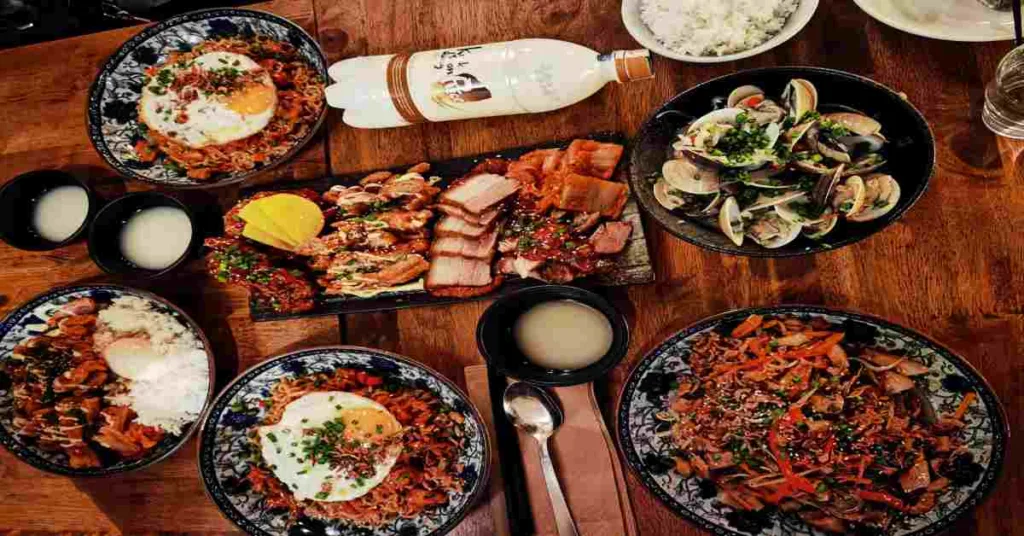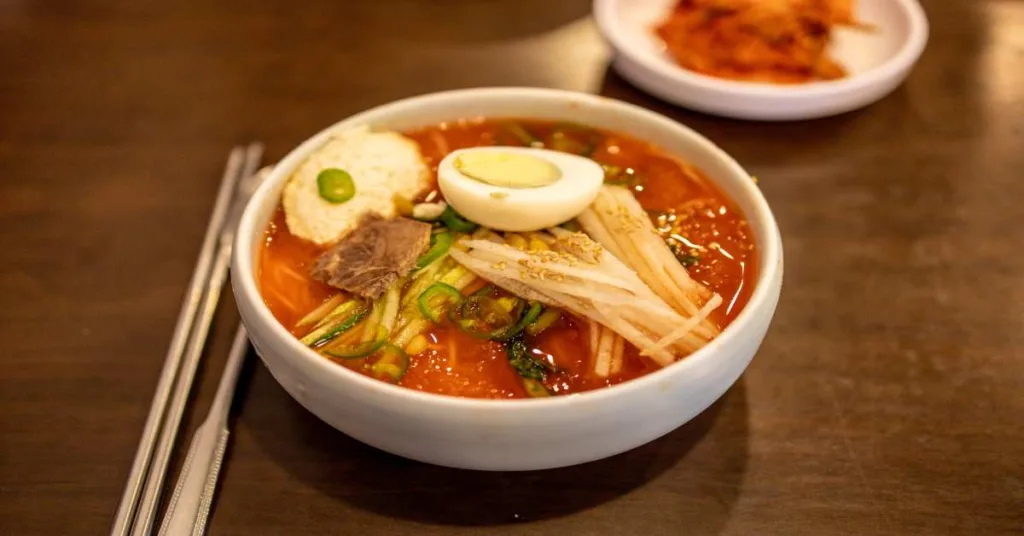The indisputable favorite of Mexican cuisine, mole, has a long history. Ask any Mexican; mole is the national dish of Mexican, the purest expression of our cuisine at its most fundamental and authentic. Mexican national identity lies in the stew, which is rich in ingredients and typically contains dozens of chilies, seeds, nuts, and spices. Every bite of Mexican mole, whether it is home-made or bought from a store, invites us to experience pre-Hispanic culture and cuisine while also acknowledging the centuries of struggle, aspiration, tradition, and innovation that have allowed us to order mole in the U.S. and Mexico pretty much whenever we want it today.
Why is Mole Poblano the national dish of Mexico?
Mole is an Aztec term meaning mix or sauce, mulli. a wonderful treat from Puebla, Mexico’s colonial capital. If I close my eyes, I can still smell the perfume of my grandmother’s kitchen and picture her stirring chocolate into a mixture of mulato, pasilla, and ancho chiles in a huge clay pot. This sauce was being combined with an extremely original paste that she produced from scratch using bread, corn tortillas, tomatoes, garlic, onion, anise, cinnamon, black pepper, and other components.It is being said that it takes days to produce this special cuisine. In spite of the fact that it is a complicated meal, you can make a real Mole Poblano from scratch in a few hours. Cooking workshops that teach you how to prepare a delicious homemade mole poblano in under four hours are available.
History of the Mole Poblano
The history of the mole has undergone various revisions. According to sources, mole originated in pre-Hispanic Mexico, when it was being considered to be mulli and served during Aztec rites and other celebratory events. It was being cooked with turkey. The Aztec name for chocolate, xocolatl, is one of the most prized substances used in moles. The dish’s flavour has changed as a result of the addition of numerous new spices and ingredients brought by European settlers. Several stories claim that in 1680, at the Santa Rosa monastery in Puebla, the nuns accidentally invented this beautiful dish to appease Viceroy Tomás Antonio de la Cerda y Aragón.
It is true that the Mole Poblano of today originates in Puebla and differs from the Mole Negro of Oaxaca. As the possible combinations of components are limitless, there are already more than 300 different types of moles. These moles include the following: Mole verde “Pipián” (green mole), Encacahuatado (peanut mole), Almendrado (almond mole), Mole Rojo with Guajillo, Manchamanteles (mole with various chiles and fruits), Mole Amarillo (yellow mole), Mole Negro (black mole from Oaxaca), etc.
Over 20 different components make up Mole Poblano, including dried chiles, Mexican chocolate, a wide range of spices, nuts, and vegetables. After hours of boiling, this mixture was further reduced to the thick mole sauce we know today.
Mexican Mole meanings in Culture and Religion
Mole has significant cultural and religious significance for Mexicans that extends beyond its mere delectability. It takes a long time and a lot of work to make mole. A person creating mole isn’t supposed to get upset since doing so may taint the sauce, according to traditional legend.Different versions of Mole B. Mole de Caderas, such as the time of celebration. B. Slaughterhouse provided. People prepare sauces together and set up altars to ensure a good harvest for the coming year.
History of Mexican Mole
Mexican food is incredibly varied and adaptable. Mole poblano is one notable exception, as many Mexican cuisines have undergone significant alteration throughout the years. The same ingredients, cooking technique, and serving ways as 300 years ago are still used today.
Mole poblano continues to be a superb example of traditional Mexican culture and cuisine because of this. Mole poblano isn’t as commonly served across Mexico as it used to be. But it holds a special place in the hearts of Mexicans and their families, and today the sauce is being made only in the most authentic Mexican restaurants. So even those who have never eaten mole poblano can enjoy its rich and complex flavor. Benito’s Authentic Mexican Grill prepares mole poblano the traditional way in Mexico. Mole promises to help you get a glimpse into a Mexican heritage that has remained unchanged for hundreds of years. Visit our Fort Worth location today and get your very own plate.
How to prepare Mexican Mole?
Ingredients
- stemmed and seeded dried chipotle chilies
- stemmed and seeded dried guajillo chilies
- cups of chicken broth
- dried, seeded, and stemmed ancho chiles
- dinner roll, broken up.
- inch slices of sliced corn tortillas
- tomatillos, halved diagonally
- tomatoes, split crosswise in half
- tbsp. of lard
- cut thinly and halved onion
- head of peeled and sliced garlic
- peanuts, chopped,
- Raisins,
- Cumin seeds, 2 teaspoons;
- cup dried thyme
- six full berries of allspice
- loves entire
- a twig of cinnamon
- cup of chicken stock
- finely chopped five ounces of dark chocolate
- three teaspoons of white sugar
- salt as per requirement..
Directions :
- In a dry skillet over medium-high heat, toast the chipotle, guajillo, and ancho chiles, stirring constantly, until warm and fragrant, about 3 minutes. Transfer to blender.
- Heat 2 cups of chicken broth in a saucepan until it begins to boil, about 5 minutes.Pour the broth into a blender.
- Dinner roll pieces and tortilla strips should be lightly toasted for about 3 minutes in a dry pan over medium heat while stirring continuously. Add to the blender along with the chilies and chicken broth.
- Toasted bread, chiles, and tortillas should all soak in the chicken broth for at least 10 minutes, completely submerged. Mix the ingredients thoroughly.
- Cook the tomatillos and tomatoes in a dry skillet over medium-high heat until tender and blackened, 3 to 4 minutes per side. Place the tomatoes in the blender along with the chili puree.
- Melt the lard in a large skillet over medium-high heat. Stir in onions, garlic, peanuts, raisins, cumin, thyme, allspice berries, cloves, and cinnamon sticks. Cook and stir until onions are soft and golden, 5 to 8 minutes. Remove cinnamon sticks and any other spices. Add the onion mixture to the blender along with the chili and tomato mixture and puree until smooth.
- Place the chili puree in a large saucepan and heat over medium-high heat. Stir in 1 cup chicken broth, chocolate, sugar, and salt. Boil the mixture. Stir until chocolate melts and sauce thickens and slightly reduces, 10 to 15 minutes.
Which Substances Are there in Mexican Mole?
Moles are being distinguished from one another by their distinctive combination of chilies, nuts, spices, vegetables, fruits, and meats. It becomes clearer as we dissect the components of your favourite moles as to how each one acquired its name, colour, and suggested food combinations.
Here is a brief introduction to the most well-known Mexican moles:
Mexican Mole Poblano
- Chile: pasilla, ancho, and guajillo
- Other ingredients include cinnamon, almonds, pumpkin seeds, peanuts, chocolate, tomatoes, garlic, spices, and herbs.
- Serve with: Mexican rice and your choice of chicken or turkey.
- From:
- Puebla
Amarillo
- Chiles include costeo amarillo, guajillo, ancho, and chilcostles or chilhuacles amarillos.
- Chayote, zucchini, green beans, potatoes, and seasonings are all included.
- Serve with: White or Mexican rice and your choice of chicken or turkey.
- From:
- Oaxaca
Chichilo
- Chiles: chilehuacle and ancho
- Inclue Chayote, green beans, green tomatoes, avocado leaves, onions, garlic, seasonings, and tomato.
- Serve with: White or Mexican rice, chicken or turkey, with sesame seeds and slices of avocado.
- From:
- Oaxaca
Coloradito
- Chiles: guajillo, ancho, and chilcostle
- Contains additional ingredients such sesame seeds, chocolate, plantains, cinnamon, tomatoes, and other spices.
- White rice is being offered as a side dish along with your choice of chicken or pork.
- From:
- Oaxaca
Manchamantel
- Chile:
- Anchos
- furthermore contains: bread, cloves, cinnamon, raisins, peanuts, apple cider vinegar, and various herbs and spices.
- White rice and vegetables are also included.
- From:
- Oaxaca, Puebla

